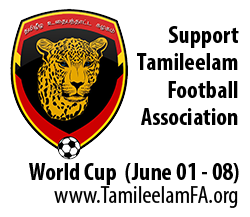Archive for the ‘Speak Out’ Category
Thangachi’s Corner – Tamil titles: yes or no?By Admin - December 18th, 2013 |
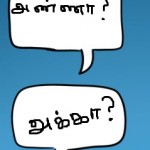 |
|
December 18, 2013 Updated every other Wednesday, “Thangachi’s Corner” is a bi-monthly feature that discusses relatable topics and issues relevant to the Canadian Tamil youth of today. For more information about this feature or to suggest a topic, feel free to e-mail us at blogs@ctya.org! Written By: Keerthana Raveendran I have been “Thangachi” for as long as I can remember. In fact, my parents were so keen on my brothers and me using these kinds of respectful Tamil names that they would address us the same way, just to make sure it caught on in our young minds. It was always fun when we’d go to parties and my mom would call out ‘Anna’. While some folks would expect an older figure to respond, it was always a little boy who’d turn his head. These names continued to stick with us as we grew up, and it came to the point in which we felt far too awkward addressing one another by name, even when we were in public or in the midst of a large crowd. I’m sure a lot of you can relate. Respectful titles for immediate family members, and tag-ons for extended family (that is, “insert name here” sithappa, and such) are very much an integral part of our Tamil culture. We use these titles to demonstrate reverence for the older generation and endearment towards the younger one. They are one-word connections with our heritage, linking us to our past even in our everyday interactions. But I’m finding more and more in my contact with younger kids at Tamil community events that this particular tradition has been slipping. Maybe it’s a sign that I am no longer a part of the younger generation and that I have officially become stodgy. Or maybe this just isn’t common practice in today’s age. After all, I get it—we tend to meet people in Anglophone settings and sometimes you never know right off the bat whether the person you just met is older than you. But I daresay a ten-year age gap is fairly obvious. And I don’t know about you, but I feel an odd sense of offense when obviously younger kids address me by my name. It’s an inexplicable sentiment, and I honestly could not tell you why I feel strongly about the use of Tamil titles, other than for an arbitrary notion of respect. Perhaps it’s a mere exercising of what I’ve been exposed to my entire life, and it begs an answer to the question of whether we are conditioned to accept the concept of respect as practiced by our ancestors. Or are we just holding onto a tradition we shouldn’t expect our young to follow? What do you think? Tamil titles: yes or no? About the Author: Keerthana Raveendran, known by her flock as Thangachi, is an aspiring author whose motivation to write usually kicks in when she’s supposed to be occupied elsewhere. She is an avid procrastinator who sees potential novel ideas as movies in her head. Maybe one of these days they’ll make it onto the page. Thangachi is currently a Masters student studying English at York University. Read More by Keerthana! |
Prescription to Health?By Admin - December 14th, 2013 |
 |
|
By: Abera Chelvaratnam When the term “healthy” is seen or heard, automatically associations like “eating only greens”, “nasty taste”, “a trend” comes to mind. It is not obscure for these connections to exist because even as young children growing up in North America, many of the popular television shows that were watched had characters who were disgusted when their parents would serve fruits and vegetables. Common scenes such as feeding nutritious food to the dog, or being treated with only ice cream and many sugary foods as a reward is very influential in a developing child. Surely, after watching so many of these shows children want to indulge themselves with foods that have no nutritional value other than high calorie and fat content. Not only are there social influences, but as a matter of fact the cravings for high fat and high calorie foods are also genetic. Historically, human ancestors were largely herbivores, thus they needed large number of foods to sustain adequate energy for their daily needs. These plant eating ancestors acquired a taste for sweet tasting things because generally speaking sweeter tasting foods is linked to being more calorie dense. Lastly, prescription drugs are clearly prevalent in both technologically and medically advanced society, where they offer fast “solutions” to majority of problems. So obviously why would humans want to be “healthy” if they can pop a pill to stop their illnesses? Are prescription drugs and over the counter drugs really solutions? Maybe in some cases. Prescription pain killers and is taken widely from once a day to many through a span of sometimes a lifetime. Clearly, it’s a misconception that medicine is a solution, rather many times it’s a treatment that must be taken continuously in order for the body to heal itself temporarily. Being a treatment rather than a solution doesn’t propose any problems to many people since it’s simple to take one pill whenever pain is felt and just carry on with the day. It’s definitely not bothersome to anyone’s lifestyle whatsoever that is until the side effects come into play or even when the drug becomes ineffective. Morphine is usually an effective painkiller that is given to patients post surgery such as after having abdominal surgeries. After surgery, glial cells in the patient’s body get excited and send out pain signals to surrounding nerves causing pain in the patient. Morphine binds to receptors on neurons to dull the pain. However, according to University of Colorado at Boulder, morphine may actually prolong the pain. Normally, morphine should dull the pain, but it can in fact also bind to TLR4 receptors on glial cells to further intensify the pain. In cases such as these, patients are able to assess the effectiveness of the drugs and stop using them if side effects outweigh the treatment. However, sometimes the downsides of drugs are not easily detected. According to Kaiser Permanente, regularly taking prescription painkillers is associated with a higher risk of erectile dysfunction. In the study, 11, 000 men with back pain were studied and more than 19 percent of these men who took high doses of painkillers also took ED prescriptions, while only less than 7 percent of men who didn’t take painkillers received ED prescriptions. Something as simple as taking painkillers for back pain can cause addiction, overdoses that lead to death and is now even associated with erectile dysfunction. A simple “solution” to a problem is capable of producing even more problems in the body, where more treatments might have to be taken. |
Thoondal: The Woman’s IntuitionBy Admin - December 12th, 2013 |
 |
|
Written By: Shayanika Suresh Sitting at a coffee shop with a small group of girl friends, sipping on hot coffee and chattering away, every so often, there is a mention of ‘intuition’ or ‘gut feeling’, and this is followed by quick nods as the group agrees with the speaker. As my friends continue on, swiftly moving from one topic to another, my mind wanders away and eventually occupies itself with questioning the concept of ‘intuition’. Intuition is defined in the Oxford Dictionary as “the ability to understand something instinctively, without the need for conscious reasoning; a thing that one knows or considers likely from instinctive feeling rather than conscious reasoning”. As women, I find that we often refer to our intuition as the ability to just know something, without actually having conscious knowledge of it. When we meet someone for the first time, without even having a ‘conversation’, we have a ‘feeling’ of whether or not they can be good acquaintances. “He seemed like a nice guy, but I could tell something wasn’t right”, my friend was saying. “Girl, you gotta trust your intuition”, responded another, and all the others joined in. Do we really have this ‘intuition’ that we so often speak of? Is there some validity to the argument that we are able to perceive good and evil through this instinctive ability? I, myself, have referred to this ‘intuition’ on several occasions, and I have to admit my strong belief in this strange ability. Still, I couldn’t help but wonder what the basis of such ability was? Was there a scientific or rational explanation to intuition? As I dug deeper to feed my curiosity, I stumbled upon an article describing the findings of a research study led by Professor Gerard Hodgkinson at the Leeds University Business School in the U.K. The study concluded that the feeling of intuition is in fact the process in which the brain draws on past experiences and external cues to make a decision. However, the speed at which this process occurs allows the reaction to be a non-conscious one. As a result, we are able to “feel” the decision, but we are unable to explain how we came to that decision. The late social scientist Herbert Simon described our accumulation of information including internal and external cues, on which our brain later draws upon in creating our intuition, as the process of ‘chunking’. Over the years, our brain chunks information, creating links and patterns between each piece. Eventually, one small detail is able to trigger the entire chunk of information, which in essence, is what we recognize as our intuition. Interestingly enough, women seem to be more likely to refer to an intuitive ability than men. If intuition is indeed a brain process as discussed above, then why is it that men do not appear to draw on this ‘gut feeling’? Sociologically, we may have an answer, but a scientific rationale may provide certainty. According to the works of W. Ickes, D.G. Myers, and R.E. Riggio, women’s historically ‘inferior’ social position allowed women to develop skills of observation and scrutiny of others, especially of those with power. As a result, they state, women became more attuned to nonverbal cues. Their works also suggest that this ability to determine nonverbal cues was a survival skill that developed through evolution. To label intuition as a female ability solely based on these works seems preposterous, so I refrain from doing so, but knowing the extent to which men rely on their ‘gut feeling’ may shed some light on this sociological divide. |
The Lost Continent of Kumari Kandam (Lemuria)By Admin - December 4th, 2013 |
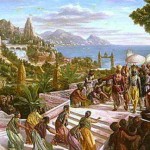 |
|
Written By: Kayalvizhi “When the southern ocean boiled over and seized the land, fine men, graceful women, and beautiful people, shapely colorful birds, animals and other living beings all suffered and perished. Temples, mansions and palaces, renowned Tamil libraries and the rare arts, colleges and schools, assemblies and meeting houses, market places and port facilities, homes, gardens and playing fields, all disappeared into the ocean.” Mutthuvirasami Naidu eloquently describes the destruction of Lemuria by ocean waves. Lemuria, also known as Kumarikandam remains a point of fascination and enhancement of Tamils everywhere. From the Silapathikaram, a Sangam literature, to modern writings, references have been made to Kumari Kandam and cruel sea that destroyed it. Kumari Kandam was a continent which extended east to Australia and in the West to Madagascar. Its inhabitants were the Tamils before it was consumed by ravaging waves. The volcanic eruptions paired with violent raging waves resulted in submerging Kumari Kandam. Kumari Kandam was Tamil land. It was the birthplace of our ancestors.Today, Tamil scholars who try to piece together the puzzle of the missing continent ask the question, what did we lose through Lemuria? The name itself, Kumari Kandam, meaning virgin continent/land was originally referred to locally as Kumari Nadu. Later, it became Kumari Kandam to Tamils. Its English reference, Lemuria, has a much more colonialist naming. Lemuria, was named by English zoologist Philip Sclater in 1864 after the monkey-like lemurs which he felt inhabited the land. He referred to Tamils who inhabited the land as beastly and lemur looking, and thus the name Lemuria was born. Tamils, not accepting Lemuria as a respectful name, continue to refer to this lost continent as Kumari Kandam. The name itself suggests that Kumari Kandam was a virginal, untouched, unviolated land – once which gave birth to the ancient Tamil civilization. The loss of our land and culture through Kumari Kandam has affected our influence and survival. Scholar A. M. Paramasivanandam once said, “If today our ancient Tamil land and ancient Tamil learning had survived, we would have ruled the world from Kumari to the Himalayas!” Our ancestors once rules the vast continent of Kumari Kandam, but today, we have been confined into relatively small space – that too which is being appropriated away from us. The interest of Lemuria was sparked in the 1890s, when Tamil intellectuals first started to piece together European geographies with Tamil history, language and literature. It was during this period that Tamil intellectuals began to recognize Kumari Kandam as the birthplace of Tamil language, literature and culture. Kumari Kandam was a continent we Tamils ruled, our literature, culture and language thrived in our own land. The imagination and fascination of Kumari Kandam will continue. However, we need to be the ones to undercover our history. With a renewed interest by Tamils into roots and history, maybe we may learn more of our history. Our history, much of it burned in the Jaffna Library, other scribes are locked up in libraries and scribes un-deciphered – at the Roja Muttiah Library now owned by American Universities and other undetected books. Maybe these artifacts can tell the tale of Kumari Kandam and more about our Tamil history. What happened to the history of Kumari Kandam?? Will we find out? |
Thangachi’s Corner: Jack of All TradesBy Admin - December 4th, 2013 |
 |
|
Written By: Keerthana Raveendran “You can’t cook? But—but you’re a girl!” Sound familiar? It is no secret that our culture has a terrible habit of gender-labelling life skills. We have undergone a normalization process in which cooking, cleaning, and domestic skills in general are expected to be learnt by women. Now, I’m all for gender equity and what not, but I don’t necessarily take issue with this part. Domestic skills really are quite useful for women, especially considering the fact that we’re all going to run our own homes one of these days. But what is more pressing is that the lack of these same skills in men is found to be acceptable. Because… won’t men be running their own homes as well? That’s the problematic part. Life skills are just that – skills that both men and women require to lead successful lives. We know well enough from popular television plotlines that folks who grow up pampered leave the home and struggle adjusting to a lifestyle in which Amma no longer cooks their favourite meals or cleans up after them. But don’t forget—gender double standards work both ways. Men in our culture are expected to earn greater incomes than their female counterparts. While women may be able to get away with not knowing how to change a car tire or fix a piece of broken furniture, men are not so lucky; in our society, sewing is to women as mechanics are to men. Physical fitness and emotional stability are also very gendered—very male—traits in our culture: men are expected to hold it together at all hours of the day. You can see what kind of problem all of this creates. By gender-labelling life skills, traits, we end up limiting both sides of the gender spectrum, hoping that our “better half” will fill eventually in the gaps one day. Instead, we should be yearning for well-roundedness from the get-go. We should be encouraging our young folks to learn and to experience as much as they can. Rather than forcing an interpretation of gendered expectations, embolden youth to develop themselves not based on whether they are from Mars or Venus, but rather on the skills they will need in the long run. Trust me on this one—it’ll give “Jack of All Trades” a whole new meaning. |
Remembering our HeroesBy Admin - November 27th, 2013 |
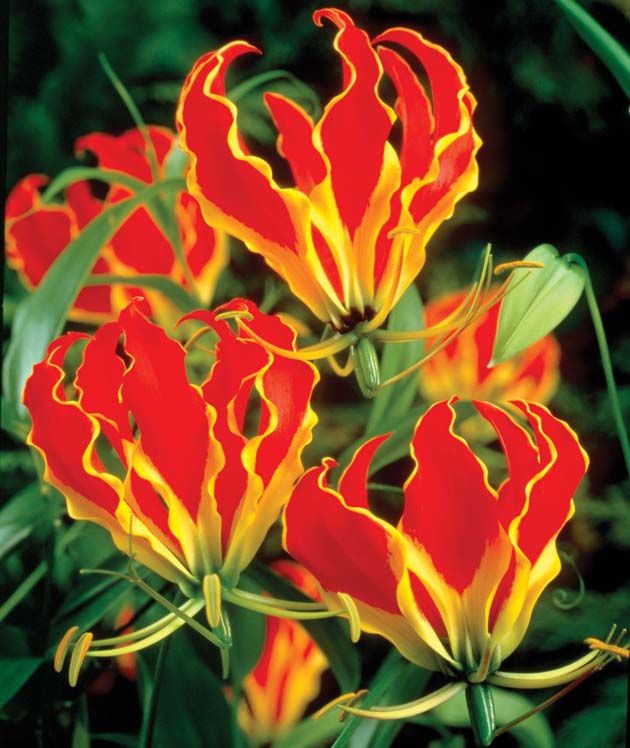 |
|
Written By: Kayalvizhi J. Today, marks the 25th anniversary of Maveerar Naal. The first cadre, Lieutenant Shankar passed away on November 27,1982. In remembrance of his day of passing and the countless sacrifices of our courageous heroes, November 27th was declared as Maveerar Naal (Heroes Day) in 1988. In the fight for freedom our country has given a huge price. Our Maveerarkal. Maveerar Naal is not a day of mourning, it is a day of rising. It is a time to remember in honour and withpride the sacrifice of our brothers and sisters. They gave themselves protecting us – our land, our identity, our culture. In a time and age when even family may not always protect each other, our Maveerarkal sacrificed themselves for our liberation and freedom. The Kaarthikai Poo was declared as Tamileelam’s National Flower in 2003 for it contained the colours of the Tamileelam National Flag, red and yellow. Today, we must wear our Kaarthikai Poo with pride today. When someone asks, “why are you wearing that?” we must speak of the sacrifices of our Maveerarkal. The sacrifices of our Maveerarkal must not be forgotten. It must not just be recorded in books and museums. The sacrifice of our Maveerarkal must be honoured, and the way to honour them is to move their dreams for a free Tamileelam forward. Our kin, our people, still suffer enormously in the hands of an oppressive regime. Even now, years after Mulliyvaikal, we hear stories of the suffering of our people – our people face rape, disappearance, coercive population control, and disenfranchisement. It was to fight this oppression that our Maveerarkal gave themselves. We too, the children of Tamileelam have a duty to protect our Mother, Our Nation. As Thalaivar has said, “the patterns of battle may change, but our battle ideal will never change.” The pattern of battle have changed, but our freedom is still dear to us, and we have a responsibility to liberate our nation from oppression and genocide. Our Maveerarkal have protected us, our lands – now it is our responsibility to move their dreams forward and work towards protecting our people and land. We, the Tamil youth in Canada have education – and this education can turn our nation around. What can we do legally to bring justice to our people? What can we do socially and culturally for our people? How can we use our young engineers and IT professionals to build something for our people? We need to believe that we can change the fate of our nation through our education, and actually work towards it. If we do not, we will just have another generation of Tamils who will be oppressed, raped and killed by the Sri-Lankan Government. How many of us are willing to idly watch? |
Aching. Every Nerve. Head to Toe.By Admin - November 26th, 2013 |
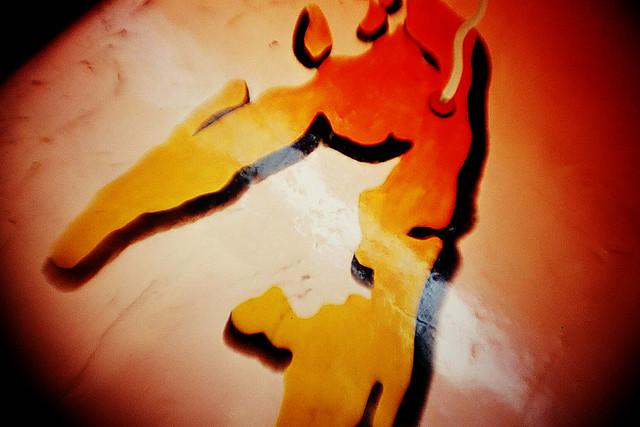 |
|
What I know Knowing. THE IMPOSSIBLES OF TOMORROW. Dying. POWERLESSLY. LETTING FAITH RUN ITS COURSE. For Today I Lay Here With “The End” Written On My Soul. This is what my sisters, brothers, mothers, fathers from my mother land, that never ever land bound by these monsters of terror forever land breathe. What I know is that -Darkness never humbled my knowledge to the sheds of redness that seeps from TE soils to the blood that boils, within my skin. The skin I label Canadian and follows Thamizhan. What I know is that we’re Gazing out in the city nights, high class education, high class life. With the black cars, black jeans and red scars. Scars that bleed for more, for more passion to ignite the fire within me. To enlighten my mind and remind myself that Thamizhan, is beyond just my skin type. I bleed to surrender for my kind, and humble my thoughts that I know warriors that fought for mine, for yours, for every living, breathing source of Thamizhan around this globe. What I know is that I’ll feed my knowings to those with hope and those with prayers for those in need of support. For those who are silenced screamers and for those who continue to fight for every single living life. They fight no cancer, a virus nor a disease of some sort. They fight to be humans beings without human rights, trust me, there’s a simple cure. What is to be known is The cure of love, simple love for one another but minus this love, my July’s have NEVER recovered. As I remember and be reminded of these days of darkness and remark Black July and dark Novembers will always be my mind’s stage of sadness that will set gates to keep fighting. For, that day, will be when my living soul will rest in peace, perhaps in a bed in TE. |
We must never forget. The significance of our Maveerarkal and Kaarthikai Poo.By Editor - November 26th, 2013 |
 |
|
Written by: Mathusan Mahalingam The month of Karthaikai, November, marks great significance for us Eelam Tamils around the globe. November is a month dedicated to commemorating our Maveerarkal, and their selfless sacrifices for our nation. Every year, partaking in such events, brings me a sense of peace, hope and strength. Every year without fail, through such events, I am reminded again, of the humble, and selfless sacrifices of our brothers and sisters, and realize their undeniable love for our Motherland, Tamileelam. This month, the Kaarthikai Poo, is also worn proudly by many. The Kaarthikai Poo was designated as the Tamil Eelam National Flower in 2003. The Kaarthikai Poo contains the spectrum of colours of the Tamileelam National Flag – Red, and Yellow. Furthermore, in the month of November, this flower blooms throughout the Tamil homeland, in the north and the east. In English, the Karthikai Poo is known as the ‘Glorisa Lily’, or alternatively as the Flame Lily. Some of the properties of the flower itself are quite remarkable and inspirational. Unlike other flowers that quickly wither when cut and placed in flower within a few days, the Karthikai Poo can survive and endure for up to four weeks when cut and placed in water. But, what is most astounding of this flower, is that it symbolizes regeneration and rebirth. Once the flower has bloomed once, the growth tip of the bulb of the flower actually grows another fork tuber, producing another bulb, and another flower. The Kaarthikai Poo, in its properties, produces two other bulbs, and thus two new flowers from its seed. So from each flower, comes two new flowers. A powerful analogy can be drawn from this property to our Maveerarkal, who become seeds of revolution and hope in their passing, and thus, using the Kaarthikai Poo as a symbol, is truly powerful. Assigning specific flowers as state flowers, or national flowers is a tradition that has been practiced for many centuries, the assigning of flowers to symbolic significance began with the assigning of specific deities specific flowers. This tradition is carried out today, where nations, and states continue to assign flowers of significance to commemorate specific occasions, or to particular nations. This month especially, we must all come together at these events, and show our respect for our Maveerarkal, and we must all wear the Kaarthikai Poo proudly. If your school is organizing an event, go to it, show support and respect for our heroes. We must all educate our peers, and co-workers of their significance, and most of all, we must remember. They gave up their lives so we could be free, and we must never forget them, but instead, move their dreams forward. Source: “Bulbs and Summer Flowering: Gloriosa Lily.” Garden Express. 2011. Retrieved from http://www.gardenexpress.com.au/gloriosa-lily/. November 01, 2011. |
My Hero – A True StoryBy Admin - November 22nd, 2013 |
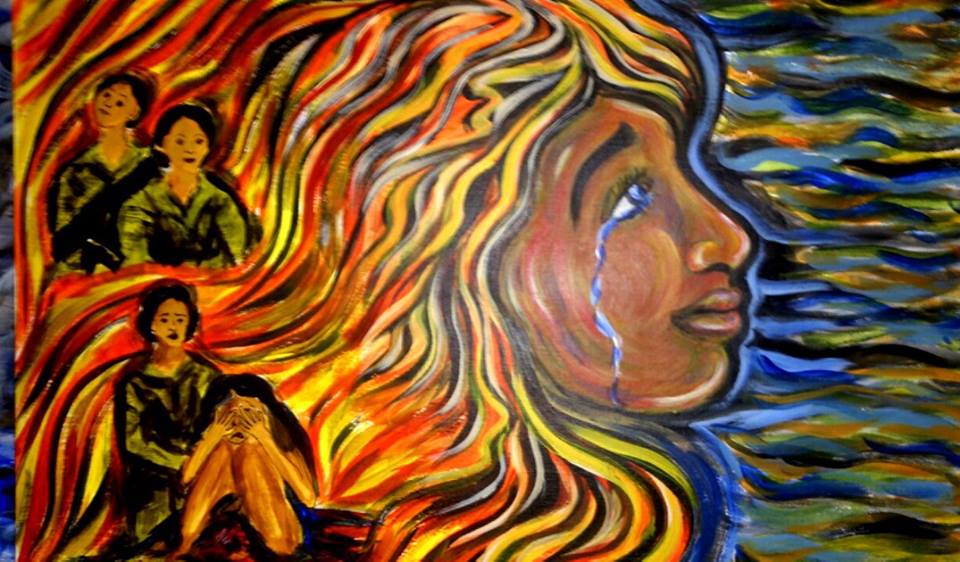 |
|
Written & Painting By: Keerthana Nagaratnam We all have a hero in our lives, in my family our hero is my sister. She is not my blood sister, she is my cousin sister. She is the daughter of my mother’s younger sister. She was known as Yaal Esai, and was the only female Maveerar of my family. At a very young age she left home to fight for freedom. Freedom that will give ethnic Tamils rights to speak their mother tongue, go to school and be treated equally. She was a courageous girl. She had a strong personality. She had her own style, her own uniqueness. She was a different beauty. Her hair was as black as the night sky, and her brown complexion was like a chocolate river. Her attitude was sharp, with a strong personality. She had the will power and confidence to take on any challenge, but she was only 18, an age that was too young to trust. She was in the 10th grade, and was a great student. Her strongest subject was math and science. Everything in her life went smoothly, until that one day. It was a day we could never forget, a day that changed her life. It was a school day and a rainy one too. The clouds cried rain, pouring on to the roads making it flooded with water. The streets were filled with huge mud puddles. The students had to run for cover under the nearest tree. It wasn’t like a school that we assume to see with tables, chairs, rooms or a roof. It was in an open field, and consisted of sitting in the hot sun. She was one of the children who stood under a tree waiting for the rain to stop. As they waited, an army truck pulled into the school property. Six Sri Lankan military soldiers got off the truck. They said they were inspecting and spoke to the teacher. After questioning about the school the men walked around the children. Vasanthi, was a friend of my cousin, was standing under small mango tree, which was a bit further than where the rest of the students were standing. Her uniform was soaked because of the rain, making the outline of her undergarments visible. She was a year older than my cousin, and was ripening as a woman. She was fair with skin clear like ivory, with glowing eyes like night stars. She just hit puberty and was glowing, looking ever so beautiful each day. Read More. |
Remembering our MaveerarBy Admin - November 21st, 2013 |
 |
|
Written By: Prynth N. Every year, in the month of November, Remembrance Day is commemorated to remember the fallen soldiers who defended liberty, equality and humanity of their homeland with their life – this is observed in North America and in many parts of the world. Many of those wars were fought outside their homeland to prevent the invasion of their hoemland and a dictatorship state. As the people of Tamileelam, we commemorate our Remembrance Day, Maveerar Naal on the 27th of November. In Tamileelam before 2009, there was the Maaveerar Week that had incorporated many festivities in different cities were people showcased their love for our heoroes of Tamileelam. Themes such as sacrifice, determination, dedication were very dominant. Almost every family had a Maaveerar who sacrificed their life for Tamileelam. Thuyilum Illam was filled with not just graves, but legacies of the past that our resistance movement was built on. I was told how even vehicles passing by Thuyilum Illam slowed down to show their respect to our fallen. I can only imagine how much our people held this month dear to their hearts in Tamileelam because I never had the chance to go back to my homeland. I didn’t even get the opportunity to be born in my own homeland because of the genocidal Sri-Lankan onslaught against our people, which forced my parents to flee the country. Today in our homeland, everything has been wiped out to erase our identity, history and pride. Will this stop us from remembering our heroes of Tamileelam in our homeland and the diaspora? Will this shake our morale to such an extent to forget the 30+ years of legacy that paused in Mulivaaiykal? Read More Inside |

